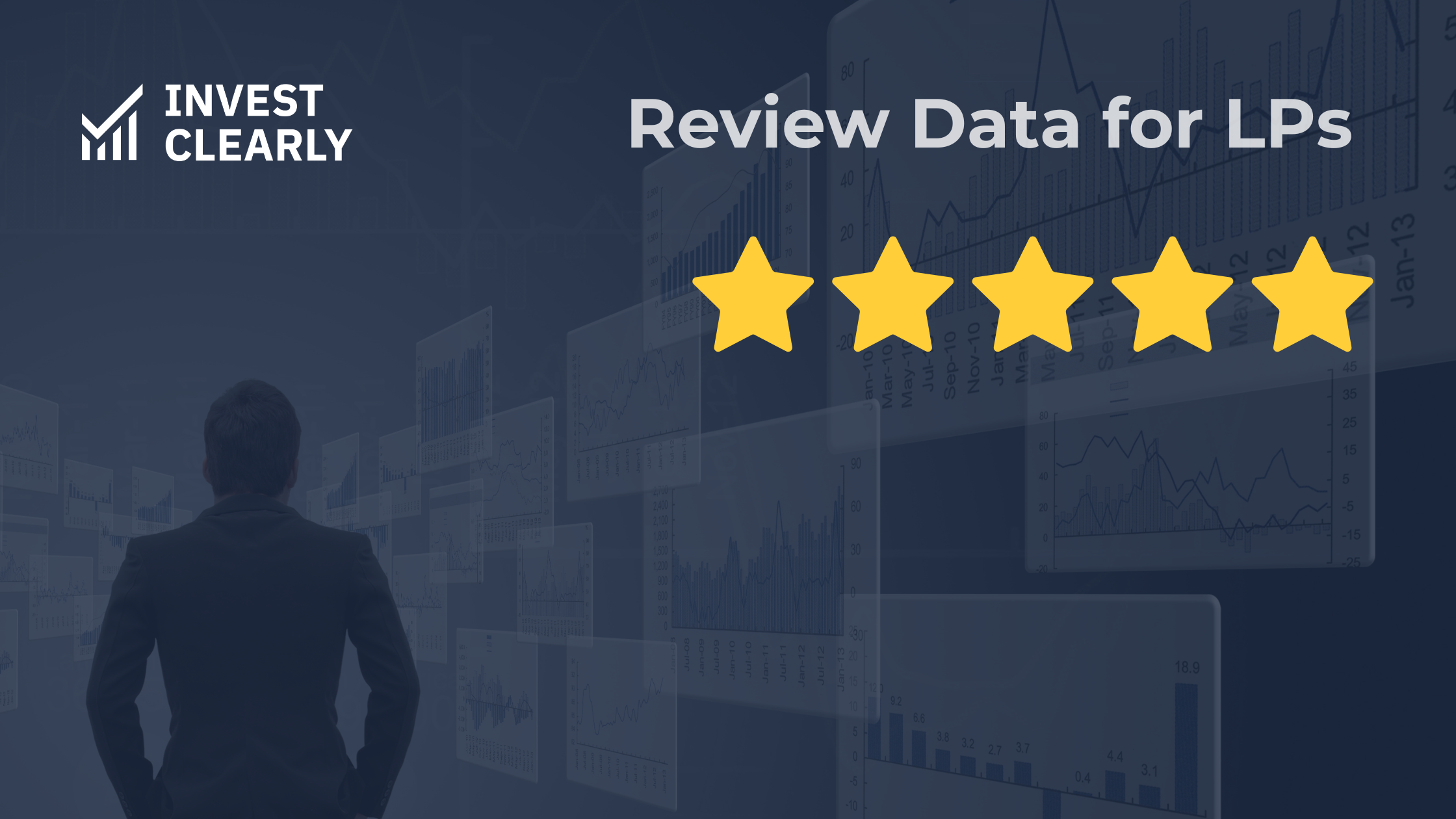
The LP Paradox: When More Information Creates Worse Investment Decisions
Never miss an Invest Clearly Insights article
Subscribe to our newsletter today
The LP Paradox: When More Information Creates Worse Investment Decisions
You've spent weeks analyzing a real estate syndication opportunity—diving into financial models, scrutinizing market reports, and vetting the sponsor's track record. Yet somehow, you feel less confident about your decision than when you started. If this sounds familiar, you're experiencing what seasoned investors call 'The LP Paradox'—the counterintuitive reality that more information often leads to poorer investment decisions, not better ones.
Experienced LPs can find themselves overwhelmed by financial models, market analyses, and sponsor presentations, yet struggle to make confident investment choices. Despite access to unprecedented amounts of data, many report increasing uncertainty and decision fatigue when evaluating potential opportunities.
This paradox stems from well-documented cognitive biases that affect even sophisticated investors. When confronted with abundant information, our brains employ mental shortcuts that can systematically undermine decision quality. For real estate investors evaluating complex syndication deals, these cognitive traps become particularly problematic.
What makes this paradox especially notable is that experienced investors are often more susceptible to its effects. Their expertise creates a sense of analytical immunity, when in reality, established mental models may actually amplify decision-making flaws rather than mitigate them.
The Illusion of Control
The abundance of information available to today's Limited Partners creates a powerful psychological trap: the illusion of control. As investors access increasingly detailed financial models and market reports, they develop an inflated sense of certainty about future outcomes. Research shows that investors who analyze excessive information tend to overestimate their ability to predict results and underestimate risk factors beyond their control. In real estate syndications, this manifests when LPs believe they can perfectly forecast performance through
rigorous analysis of pro forma projections.
The consequence is what psychologists call "analysis paralysis"—a state where decision-making stalls under the weight of excessive information. LPs caught in this cycle continuously request additional data points, spend weeks analyzing minor details, and often miss opportunities while seeking perfect information.
Consider an institutional LP who spent three months conducting exhaustive due diligence on a multifamily opportunity. By the time they felt confident enough to proceed, the deal had closed with other investors. The following year, that property outperformed expectations during a market shift because of qualitative factors the LP had minimized in their analysis.
The paradox reveals itself: the pursuit of complete information creates an illusion of control while actually reducing effectiveness. Certain critical variables—market timing, sponsor execution, and operational excellence—cannot be fully captured in spreadsheets, regardless of their detail.
Metric Fixation: The Danger of Overweighting Quantitative Data
When evaluating syndication opportunities, Limited Partners often gravitate toward hard numbers. This creates what experts call "metric fixation"—where quantitative measures become overemphasized at the expense of qualitative factors.
IRR, equity multiples, and cap rates dominate investment conversations for good reason. They provide concrete benchmarks and enable quick comparisons. The problem emerges when these metrics become proxies for comprehensive evaluation rather than components of it.
Numbers tell a compelling story, but they're always telling a story about the past, not necessarily the future. This backward-looking nature of standard metrics creates a significant blind spot. A sponsor's track record showing consistent 20% IRRs might reflect skill—or simply fortunate timing during a rising market.
Without contextual understanding, metrics become misleading rather than illuminating. Consider these common scenarios:
- A multifamily project with impeccable projected returns but questionable property management capabilities
- An office conversion with attractive acquisition metrics but insufficient sponsor experience in navigating entitlement processes
- A retail redevelopment showing stellar cap rate compression in models that fail to account for shifting consumer behaviors
As an example, say that an LP consortium invested in a mixed-use development with perfect numbers—18% IRR, 2.1x equity multiple, and conservative underwriting assumptions. What the metrics couldn't capture was the sponsor's operational inefficiencies. Despite hitting acquisition targets, the project underperformed as execution issues eroded returns.
The metrics looked flawless. The reality proved otherwise.
The Blind Spots: Critical Qualitative Factors Often Overlooked
Beyond the numbers lie crucial qualitative factors that frequently determine investment success. These blind spots represent the hidden risks that spreadsheets can't capture.
Sponsor team dynamics often tell a more predictive story than past performance metrics. Does the leadership team demonstrate cohesion during presentations? Is there a clear succession plan? These human elements frequently determine execution quality when challenges arise.
Track record nuance demands careful attention. A sponsor might show impressive returns, but context matters. Were gains achieved through market timing or operational excellence? Did they perform well in downturns or only during favorable conditions? How transparently do they discuss past mistakes?
Operational capabilities beyond financial engineering represent another commonly overlooked dimension. The best sponsors demonstrate mastery not just in acquiring assets but in extracting value through day-to-day management—a quality rarely visible in presentation decks.
Communication patterns serve as powerful predictors of transparency during future challenges. Notice how sponsors respond to difficult questions during due diligence. Those who provide thoughtful, direct answers rather than defensive or evasive responses typically maintain this transparency when problems inevitably emerge.
Experienced LPs who recognize these blind spots gain a significant advantage in identifying truly exceptional investment opportunities that others might miss while fixating on quantitative metrics alone.
Cognitive Biases Affecting Experienced LPs
Even the most sophisticated Limited Partners remain vulnerable to cognitive biases that can derail decision-making. These mental shortcuts evolved to help humans process information quickly, but they create systematic errors in investment evaluation.
Confirmation bias leads investors to seek information that validates initial impressions. Once an LP develops a favorable view of a sponsor or deal, they unconsciously filter subsequent information to reinforce that perspective. This explains why investors often overlook red flags that contradict their established opinions.
Recency bias causes investors to overweight recent experiences in current decisions. An LP who recently experienced a successful multifamily investment might develop an excessive appetite for similar deals, regardless of changing market conditions or fundamentals.
Authority bias manifests when investors defer to "expert" opinions without critical evaluation. This commonly occurs when prestigious firms or well-known figures back a deal, creating a halo effect that discourages independent analysis.
Anchoring occurs when investors fixate on initial data points regardless of relevance. For example, an LP might become anchored to a projected IRR figure presented early in a pitch, using it as a mental reference point even after learning information that should fundamentally alter their assessment.
These biases don't diminish with experience—they often intensify. Veteran investors can develop overconfidence based on past successes, making them more susceptible to these cognitive traps rather than less.
Recognizing these biases is the first step toward neutralizing their influence on investment decisions.
Building a Balanced Decision Framework
Overcoming the LP Paradox requires a structured approach that balances quantitative analysis with qualitative evaluation. Successful Limited Partners develop frameworks that acknowledge both dimensions while minimizing cognitive biases.
Use the 70/30 approach.
The 70/30 approach offers a practical starting point. Dedicate 70% of your evaluation to fundamental factors including sponsor capability, operational expertise, market fundamentals beyond current metrics, execution roadmap with potential obstacles, and communication quality. Reserve the remaining 30% for traditional quantitative analysis. This balance ensures numbers inform rather than dominate your decision process.
Implementing decision journals creates accountability and improves future choices. Document not just what you decide but why, capturing your thought process, assumptions, and areas of uncertainty. Review these journals regularly to identify recurring patterns in your decision-making.
Perfect your pre-mortem.
Pre-mortem analysis counteracts optimism bias by imagining potential failure before it happens. Ask yourself: "If this investment fails, what will likely have caused it?" This exercise reveals blind spots and encourages preventative thinking that standard due diligence might miss.
Creating a personal investment thesis forces disciplined evaluation across opportunities. Define your risk tolerance, return expectations, and non-negotiable factors before reviewing specific deals. This prevents the common mistake of modifying standards to accommodate attractive-seeming opportunities.
Rely on proven metrics of success.
When information overwhelms, focus on whether the sponsor demonstrates operational excellence beyond financial engineering, how the team has performed in challenging market conditions, what specific expertise they bring to this particular strategy, and how transparently they communicate, especially regarding potential challenges. These questions cut through information noise to reveal factors most predictive of investment success.
Conclusion
The LP Paradox presents a challenging reality: more information often leads to worse investment decisions. By understanding this counterintuitive truth, Limited Partners can develop more effective approaches to evaluating syndication opportunities.
The solution isn't ignoring data—it's processing information more intelligently. By recognizing cognitive biases, balancing quantitative and qualitative factors, and implementing structured decision frameworks, LPs can transform information from a potential liability into a genuine advantage.
Consider these actionable steps to immediately improve your decision process:
● Establish clear evaluation criteria before reviewing specific deals
● Document your decision process through investment journals
● Conduct pre-mortem analyses on potential investments
● Focus on sponsor operational capabilities beyond financial metrics
● Pay close attention to communication quality and transparency
The competitive advantage in today's syndication landscape doesn't come from accessing more information—it comes from processing available information more effectively than others. LPs who master this discipline consistently identify superior opportunities while avoiding costly mistakes.
In a market flooded with data, disciplined information processing isn't just helpful—it's essential for investment success. The most sophisticated Limited Partners understand that sometimes, less but better information leads to superior outcomes.
Written by
Adam Gower Ph.D is the Founder of GowerCrowd. GowerCrowd builds digital marketing systems for seasoned real estate sponsors so they can find more investors, raise more capital, and scale faster.
Other Articles

Is Private Equity Coming to Your 401(k)?
A new executive order could lead to private markets getting access to 401(k) capital. Learn how a new wave of capital and liquidity demands could affect private real estate.

Investor Experience Index Q3, 2025: LP Takeaways
Discover quarterly insights of how LPs rate their experiences with GPs. Get data-driven questions to use when evaluating GPs.

An Honest Assessment of Feeder Funds
Feeder funds get a bad reputation. The middleman can create drag, opacity, and misaligned incentives. But when done correctly, they’re useful for access and diligence. The problem is, almost nobody uses them correctly in retail real estate investing.

Investor Experience Index Q3 2025: GP Takeaways
The Investor Experience Index provides a quarterly snapshot of how limited partners (LPs) rate their experiences with general partners (GPs). The data for this report is drawn exclusively from verified investor reviews published on Invest Clearly in Q3 2025.

From Interest to Action: A Step-by-Step Guide for First-Time Syndication Investors
Four steps to help new investors invest in syndications confidently and move past decision paralysis.

Single-Tenant Net Leases: A Simple Way to Build Predictable Income
Discover why single-tenant net lease properties offer investors steady income, lower risk, and passive management.